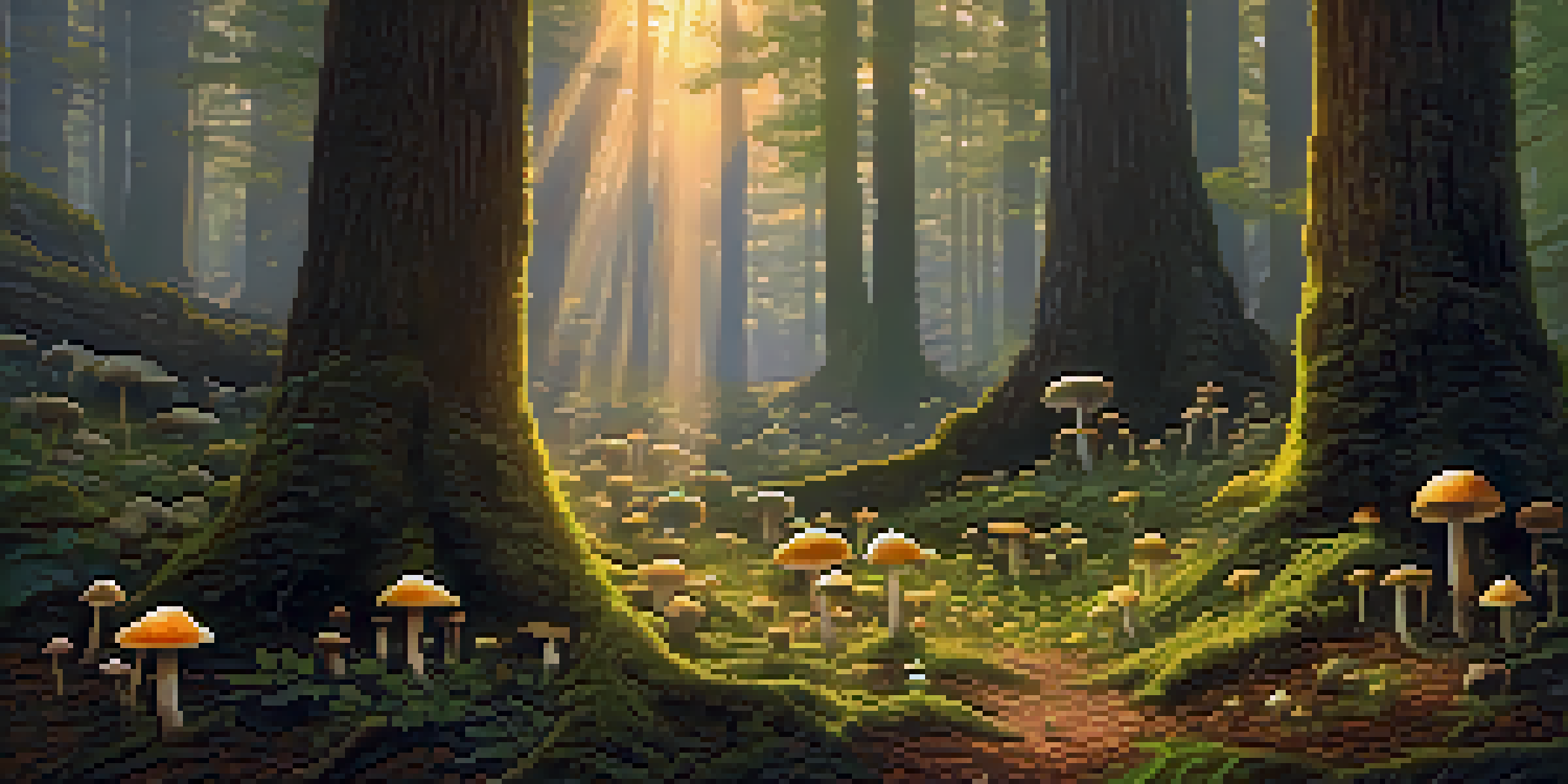Understanding Entheogens: Historical Context and Modern Use

What Are Entheogens? A Simple Introduction
Entheogens are substances that can induce altered states of consciousness, often used in spiritual or religious contexts. The term itself comes from the Greek words 'entheos', meaning 'inspired' or 'filled with the divine', and 'genes', meaning 'born of' or 'producing'. These substances, which include plants like peyote and psilocybin mushrooms, have been used by various cultures for centuries to facilitate connection with the spiritual world.
Psychedelics are a tool for self-exploration, healing, and understanding the nature of consciousness.
In contemporary discussions, entheogens are often associated with the broader category of psychedelics. However, they are distinguished by their specific spiritual or religious uses. While many people think of psychedelics purely in terms of recreation, entheogens carry a deeper significance, often leading to profound insights or transformative experiences.
Understanding entheogens starts with recognizing their role in human culture. They have been tools for healing, divination, and community bonding, bridging the gap between the physical and spiritual realms.
A Historical Overview of Entheogen Use
Historically, entheogens have been integral to many indigenous cultures. For example, the use of ayahuasca in Amazonian tribes has been documented for centuries, serving as a sacred tool for healing and guidance. Similarly, the ancient Greeks utilized kykeon, a drink believed to contain psychoactive ingredients, during the Eleusinian Mysteries, a series of sacred rites.

These practices highlight the deep-rooted connection between humans and nature, as many entheogens are derived from plants. This relationship is not merely about consumption; it involves respect and reverence for the natural world, showcasing a holistic approach to spirituality and well-being.
Entheogens: A Spiritual Connection
Entheogens are substances that induce altered states of consciousness, often used in spiritual or religious contexts to facilitate a connection with the divine.
As we explore this history, it's clear that the use of entheogens is not a modern fad, but rather a continuation of ancient traditions that seek to understand the cosmos and human existence.
Cultural Significance of Entheogens in Ancient Societies
In ancient societies, entheogens often held a central role in rituals and ceremonies. Cultures like the Aztecs and Mayans revered substances like psilocybin mushrooms and peyote, using them to connect with their gods and ancestors. Such practices were not only spiritual but also served as a means of community cohesion, bringing people together in shared experiences.
The experience of the sacred is a universal human experience, and entheogens can be a pathway to that experience.
These rituals often involved guided consumption, where shamans or spiritual leaders facilitated the experience. This ensured that the participants could navigate the sometimes overwhelming effects of the substances, allowing for deeper exploration and understanding of their visions.
Through these examples, we see that entheogens were more than just substances; they were integral to the fabric of society, influencing art, religion, and social structures.
The Rediscovery of Entheogens in Modern Times
In recent years, there has been a resurgence of interest in entheogens, particularly within the fields of psychology and psychiatry. Researchers are exploring their potential therapeutic benefits, especially for conditions like PTSD, depression, and anxiety. This rediscovery is often framed within the context of the broader psychedelic renaissance, which seeks to reclaim these substances from the stigma of the past.
Organizations and studies are emerging to highlight the efficacy of entheogens in clinical settings. For instance, studies on psilocybin have shown promising results in alleviating treatment-resistant depression, suggesting that these ancient practices may have modern applications.
Modern Research on Healing Potential
Recent studies are exploring the therapeutic benefits of entheogens, particularly for mental health conditions like PTSD and depression, highlighting their modern relevance.
This renewed interest challenges previous misconceptions and encourages a more nuanced understanding of entheogens, recognizing them as valuable tools for healing rather than mere recreational drugs.
Legal and Ethical Considerations Surrounding Entheogens
The modern landscape of entheogens is complicated by legal and ethical considerations. Many substances that were once sacred and widely used are now classified as illegal, creating a barrier for those seeking their benefits. This criminalization often stems from historical biases and misconceptions about the nature of these substances.
As the conversation around psychedelics shifts, advocates are pushing for policy changes to facilitate research and responsible use. This includes calls for decriminalization and regulation, emphasizing education and safety as priorities.
Navigating this legal landscape requires a careful balance between respecting cultural traditions and adapting to modern societal norms, ensuring that entheogens can be used safely and ethically.
Personal Experiences: Transformative Potential of Entheogens
Many individuals report profound experiences after using entheogens, often describing feelings of interconnectedness and clarity. These personal narratives highlight the transformative potential of these substances, which can lead to lasting change in perspective and behavior. For instance, someone struggling with existential dread might find new meaning and purpose through a guided entheogen experience.
These experiences can vary widely, from deeply spiritual encounters to intense emotional releases. They often provide insights that are hard to articulate, making them deeply personal and unique. This variability underscores the importance of setting and intention when engaging with entheogens.
Cultural and Legal Challenges
The legal landscape surrounding entheogens poses challenges for their use and research, with advocates pushing for policy changes to promote safe and responsible access.
Ultimately, these personal stories contribute to a growing body of evidence supporting the beneficial outcomes of entheogen use, advocating for a more open-minded approach to their potential.
Future Directions: Research and Integration of Entheogens
The future of entheogen research looks promising, with an increasing number of studies exploring their effects on mental health and spirituality. Researchers are investigating not only their therapeutic potential but also how they can be integrated into existing healthcare frameworks. This integration could revolutionize the way we approach mental health treatment, combining traditional methods with modern science.
Moreover, as more people share their positive experiences, societal attitudes towards entheogens are slowly shifting. This cultural shift may pave the way for broader acceptance and understanding, allowing for more in-depth exploration of these substances within a safe and supportive context.

As we look ahead, continued research and dialogue will be essential in unlocking the full potential of entheogens, ensuring that they are used responsibly and effectively in both personal and therapeutic settings.